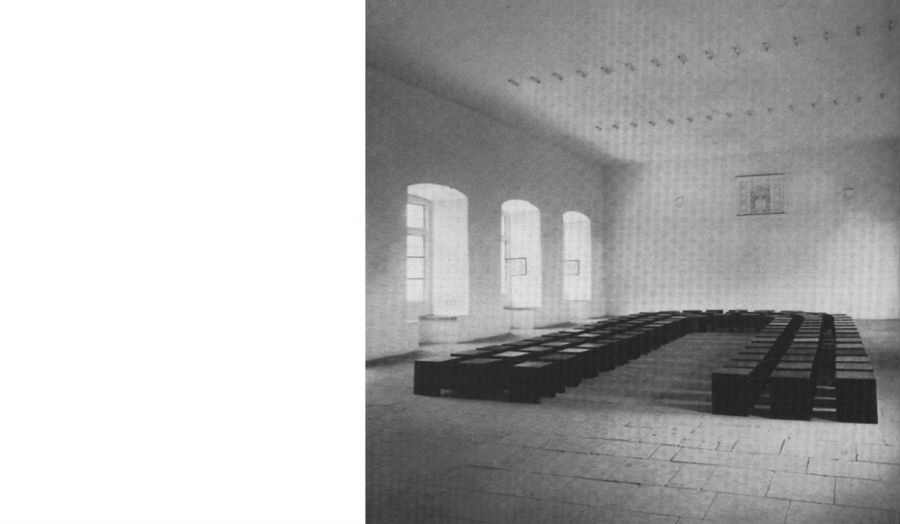Studio brief
Immanence
In Tomas Tranströmer’s poem ‘Romanesque Arches’ a group of tourists emerge from the dark interior of a Romanesque church. The experience of the space is moving and significant for even these most un-committed of visitors. Awed by the work of previous generations who built the church and traces of those who may have worshipped there, the narrator has undergone some kind of revelation. Perhaps not religious, but a glimpse at least of seemingly limitless human achievement and potential.
This link between human perception and sacred architecture pre-occupied church architect and urban-planner Rudolf Schwarz, who explored in his own designs his conception of a link between community, the material artefact of the church and the intangible. Thomas Hasler’s text on Schwarz’s work ‘The sacred and architecture’ gives us a clearer idea of this fleeting relationship between presence and immanence.
“This virtual and merely conceptual movement gestures at something that lies beyond that which is visible in front of us, immanent - only in this manner does the transcendent structure of a space manifest itself. In our minds, we push the boundaries of tangible architectural space into an expanded, imaginary space and - soaring further still - oppose them to the unimaginable.”
Presence
The year is divided between a series of alternating research and design projects in which we will explore the theme of sacred architecture. Not so much as a question of typology, functional or stylistic considerations but with more fundamental architectural questions that might lead us to re-consider religious and spiritual buildings anew. We will do this by considering presence in many tangible and detailed ways; of materials and their qualities and assembly, and of people, sounds and light.
Research Project 1
We will start with a wide ranging and collaborative research and drawing project. This will draw on a broad range of references from many different eras and cultures to provoke an open discussion about the nature of sacred architecture and compile a shared library of references to support the design projects over the year.
Design Project 1
The first design project will be a space for contemplation in a busy institutional or public context such as a hospital, shopping mall or station. It may be seen as non-denominational, ‘multi-faith’ or secular and removed from a specific religious context to explore the architectural themes explored in the first research project.
Study Trip
We will travel by train from London to Glasgow to visit several of the extraordinary Catholic churches designed by Gillespie, Kidd and Coia in the 1950s and 60s. From Scotland we will fly east across the North Sea to visit the Copenhagen and Malmö area where Denmark is linked to Southern Sweden by the Öresund bridge. As well as many examples of new contemporary architecture in this dynamic region we will visit some of the masterworks of twentieth century church architecture by Jørn Utzon and Jensen-Klint in Denmark and Sigurd Lewerentz in Sweden. Students will survey and draw a specific detail in one of the churches visited.
Design Project 2
We continue our collaboration with architect and furniture designer Simon Jones. In previous years we have explored the relationship between architecture and furniture by making. By designing and fabricating an object or detail at 1:1 we will aim to reach a level of detail or material presence beyond the visual or purely representational. This may become a generative or component piece of the final project.
Design Project 3
For the final project students will propose a religious building on one of several sites in and around London on urban and semi-urban sites. The exterior presence as well as the interior experience will be considered and the potential of the new building to contribute to a public space and context. The project will draw together reference and material research and be specific to a religion with rigorous supporting research into liturgy, ceremony and community.
References
Tomas Tranströmer, “Romanesque Arches”
Staufer & Hasler Architekten/Architects, Thesen/Theses
OASE 45-46, Essential Architecture
Johan Celsing, ‘The Robust, the Sincere’
Rudolf Schwarz, Kirchenbau.
Gillespie, Kidd & Coia, Architecture 1956 - 1987.

Details
| Course | Architecture BA (Hons) RIBA Part 1 |
| Tutors | Nina Lundvall James Payne |
